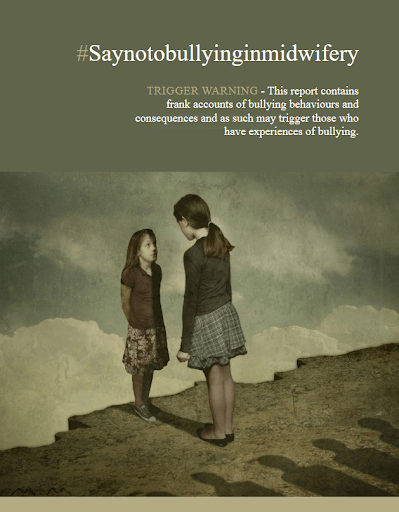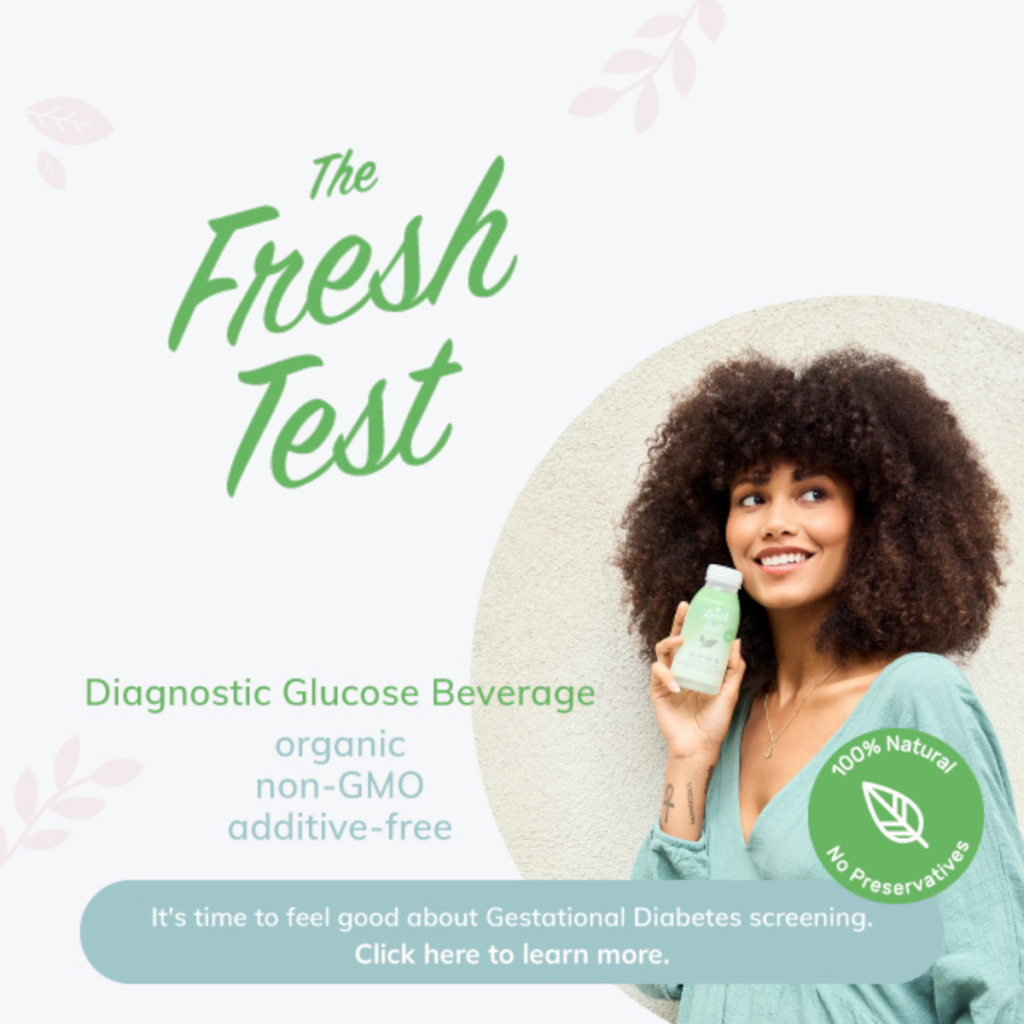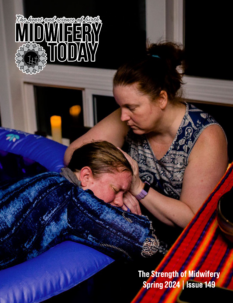
Photo by Ed Robertson
Media Reviews – Issue 149
Midwifery Today, Issue 149, Spring 2024
Join Midwifery Today Online Membership
Saynotobullyinginmidwifery by Amanda Burleigh, et al. 2023. (Self-published, 236 pages, $10, Kindle and paperback).
The trigger warning on the front cover will give anyone about to read this report an idea of what is to come. It came out of a Facebook group set up in 2017 to share experiences of midwife and maternity worker bullying. Through stories or quotes, the authors share some of the bullying and harassment which occurs to many staff working within maternity services. The book explains why some midwives are leaving the NHS, and some are moving into other (often non midwifery) NHS roles.
The stories are often from midwives who have been bullied by peers, colleagues, and, worryingly, midwifery managers. This sadly evidences the poor culture within maternity services, borne out by reference to Kirkup reports 2015 and 2022.
Student midwives recount issues surrounding why they are leaving the NHS. This is often without completing training or within the first year of qualification. Some of the bullying is subtle, such as being excluded or having mentors fail to complete their training records.
I believe this book would be of extra interest and value if there was some final advice about support and help. This assistance in dealing with bullying could be from organizations, support groups, or accessing “TED” talks.

Freebirth Stories, by Mavis Kirkham and Nadine Edwards. 2023. (Sheffield, UK: Birth Practice and Politics Forum, 443 pages, £14.99, Kindle and paperback.)
During the pandemic, many women were unable to access a variety of maternity care services, including birth centres, homebirths, and waterbirths. This book starts by sharing why women choose freebirthing. Pre-Covid, maternity services were underfunded and had become centralised, standardized, and did not offer women a physically and emotionally rewarding birth experience. This led many women to seek a different type of labour and birth, hence freebirthing.
Stories throughout the book share previous birth experiences, which many women describe as traumatic, even though in their medical records the birth is described as “normal.” Women who were seeking a freebirth often experienced negative comments from midwives and obstetricians. Many of the birth stories will be difficult for us to read.
Women wrote that they wanted choice, freedom, information, and birth in their own environment. Many women undertake their own preparation, purchasing birth stools, balls, TENS machine, and seeking out complementary therapists.
The authors continue with how to discuss freebirthing with your family, where reactions are mixed and, in some cases, mothers called “delusional.” Women describe their journey to find the support of doulas, as in many cases mothers have been told (even by NHS midwives) that freebirthing is illegal.
The final chapters share actual birth stories. Some maybe uncomfortable to read, but all should be reviewed and reflected upon.
As we move into 2024, this book will continue to be relevant in today’s difficult financial times.

















